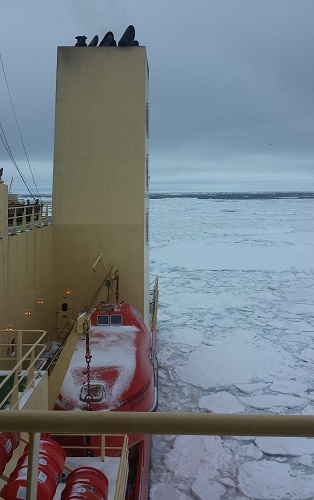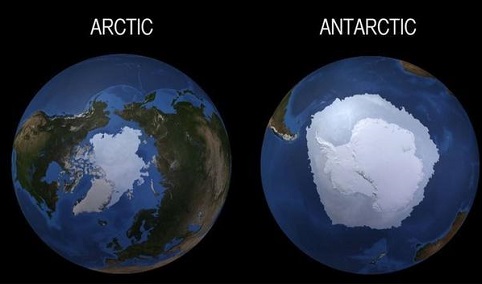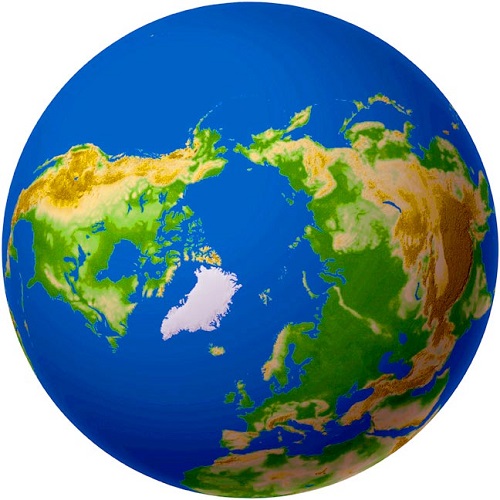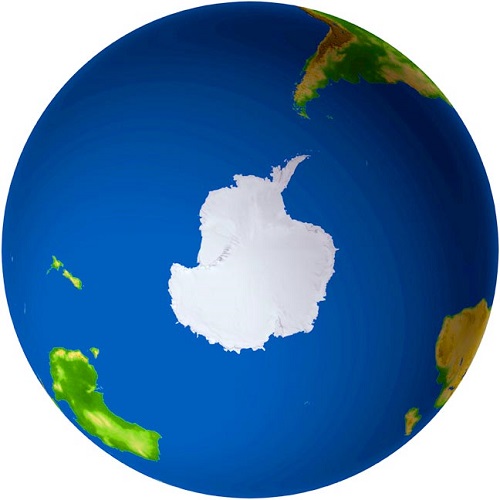We’ve left the ice and have deployed our last Argo floats. We’re well
on our way back to the dock. The sun is even starting to rise in the
morning for us now. I probably should have posted this blog a long time
ago, but there was so much exciting science going on, I didn’t do it
when we were up against the continent and after that it never seemed to
fit. Now that we’re transiting back to Hobart, let’s take a closer look
at the continent we’re leaving behind.

Let’s take a closer Look at Antarctica

Antarctica is the southernmost continent and is completely surrounded by the Southern Ocean. The continent is about 1.5 times the size of the United States, but the sea ice can double the size of Antarctica each year. Antarctica is home to both the geographic and magnetic South Pole (which are not in the same place).
Antarctica is a continent of extremes. On average it is the coldest, driest, and windiest continent. The coldest temperature recorded on earth, -128.6 degrees F was recorded on Antarctica at Vostok Station. 97% of the land in Antarctica is covered in ice--much of it over a mile thick. However Antarctica is still a desert with annual precipitation of only 8 inches along the coast and much less inland. Antarctica is also known for its katabatic winds, which can blow at speeds of up to 200 miles per hour!
Because of the tilt of Earth’s axis, during the Antarctic Summer (December), the South Pole can receive 24 hours of sunlight. In the Antarctic Winter (June), there can be 24 hours of darkness. The outer areas of the continent, which are at lower latitudes can still receive much longer daylight hours in the summer and much shorter daylight hours in the winter.
Despite its harsh conditions, Antarctica has a surprising amount of biodiversity including penguins, seals, cetaceans, fish, invertebrates, and other life.
Antarctica has no permanent residents or native people. However, depending on the time of year, between 1000 and 5000 people can be found at Antarctica’s various research stations. Antarctica has no official government, although some countries have claimed certain areas of the continent. In 1959 the Antarctic treaty declared the Antarctic continent politically neutral setting it aside as a scientific preserve for all countries. Over 20 countries across the world have research stations in Antarctica, some permanent and some just summer stations. You can explore and learn more about US research stations here.
Arctic vs Antarctic
It’s very easy to confuse the Arctic with the Antarctic especially with all the cartoons that show penguins and polar bears hanging out together. It’s also easy to assume that both poles are very similar since they’re both at the ends of the earth. But the Arctic and Antarctic are very different places… I guess you could say they’re “polar opposites.” Okay, I promise that’s my only attempt at humor today.
Here’s a quick overview to help tell the two poles apart and explain to
your friends why you’ll only see polar bears and penguins together on
TV.

Arctic

- Home to the North Pole
- Water surrounded by land
- Mostly sea ice
- Ice bergs the size of cars
- Elevation at North Pole: 3 feet
- Average Temperature: Summer 32 degrees F and Winter -40 degrees F
- Home to lots of large land animals including polar bears, caribou, fox, hair, lemmings, bears, muskox, as well as marine animals
- Has populations of native people
Antarctic

- Home to the South Pole
- Land surrounded by water
- 97% of land covered in freshwater ice, but sea ice doubles size each year
- Ice bergs the size of cities
- Elevation at South Pole: 9,300 feet
- Average Temperature: Summer -18 degrees F and Winter -76 degrees F
- Home to marine animals like penguins and seals, has no land animals bigger than 3 inches long
- No native people, but does have research stations


Comments